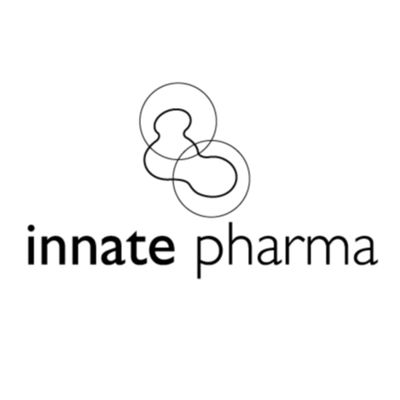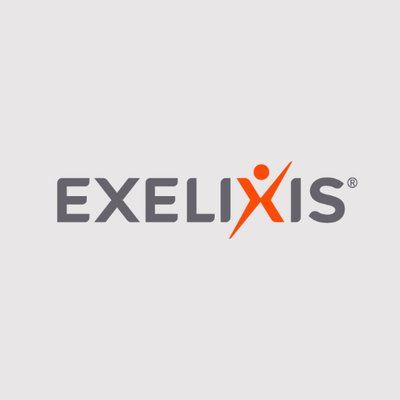预约演示
更新于:2025-05-07
NKG2A
更新于:2025-05-07
基本信息
别名 CD159 antigen-like family member A、CD159a、killer cell lectin like receptor C1 + [10] |
简介 (Microbial infection) Viruses like human cytomegalovirus have evolved an escape mechanism whereby virus-induced down-regulation of host MHC class I molecules is coupled to the binding of viral peptides to HLA-E, restoring HLA-E expression and inducing HLA-E-dependent NK cell immune tolerance to infected cells. Recognizes HLA-E in complex with human cytomegalovirus UL40-derived peptide (VMAPRTLIL) and inhibits NK cell cytotoxicity.
Immune inhibitory receptor involved in self-nonself discrimination. In complex with KLRD1 on cytotoxic and regulatory lymphocyte subsets, recognizes non-classical major histocompatibility (MHC) class Ib molecule HLA-E loaded with self-peptides derived from the signal sequence of classical MHC class Ia molecules. Enables cytotoxic cells to monitor the expression of MHC class I molecules in healthy cells and to tolerate self (PubMed:18083576, PubMed:37264229, PubMed:9430220, PubMed:9486650). Upon HLA-E-peptide binding, transmits intracellular signals through two immunoreceptor tyrosine-based inhibition motifs (ITIMs) by recruiting INPP5D/SHP-1 and INPPL1/SHP-2 tyrosine phosphatases to ITIMs, and ultimately opposing signals transmitted by activating receptors through dephosphorylation of proximal signaling molecules (PubMed:12165520, PubMed:9485206). Key inhibitory receptor on natural killer (NK) cells that regulates their activation and effector functions (PubMed:30860984, PubMed:9430220, PubMed:9485206, PubMed:9486650). Dominantly counteracts T cell receptor signaling on a subset of memory/effector CD8-positive T cells as part of an antigen-driven response to avoid autoimmunity (PubMed:12387742). On intraepithelial CD8-positive gamma-delta regulatory T cells triggers TGFB1 secretion, which in turn limits the cytotoxic programming of intraepithelial CD8-positive alpha-beta T cells, distinguishing harmless from pathogenic antigens (PubMed:18064301). In HLA-E-rich tumor microenvironment, acts as an immune inhibitory checkpoint and may contribute to progressive loss of effector functions of NK cells and tumor-specific T cells, a state known as cell exhaustion (PubMed:30503213, PubMed:30860984).
(Microbial infection) May recognize HLA-E in complex with HIV-1 gag/Capsid protein p24-derived peptide (AISPRTLNA) on infected cells and may inhibit NK cell cytotoxicity, a mechanism that allows HIV-1 to escape immune recognition.
(Microbial infection) Upon SARS-CoV-2 infection, may contribute to functional exhaustion of cytotoxic NK cells and CD8-positive T cells (PubMed:32203188, PubMed:32859121). On NK cells, may recognize HLA-E in complex with SARS-CoV-2 S/Spike protein S1-derived peptide (LQPRTFLL) expressed on the surface of lung epithelial cells, inducing NK cell exhaustion and dampening antiviral immune surveillance (PubMed:32859121). |
关联
32
项与 NKG2A 相关的药物靶点 |
作用机制 NKG2A拮抗剂 |
在研机构 |
原研机构 |
在研适应症 |
最高研发阶段临床3期 |
首次获批国家/地区- |
首次获批日期1800-01-20 |
靶点 |
作用机制 NKG2A拮抗剂 |
在研机构 |
原研机构 |
非在研适应症- |
最高研发阶段临床1/2期 |
首次获批国家/地区- |
首次获批日期1800-01-20 |
靶点 |
作用机制 NKG2A拮抗剂 |
在研适应症 |
非在研适应症- |
最高研发阶段临床1/2期 |
首次获批国家/地区- |
首次获批日期1800-01-20 |
39
项与 NKG2A 相关的临床试验NCT06769126
PRISM: PRecIsion in SCLC Via a Multicohort Study: Randomized Phase II Studies Evaluating Maintenance Durvalumab With or Without Biomarker-Directed Therapy for Extensive Stage Small Cell Lung Cancer (ES-SCLC)
This phase II trial tests how well biomarker tests on patients tumor tissue works in selecting personalized treatments for patients with extensive stage small cell lung cancer (ES-SCLC). Biomarker tests look for certain features in cancer cells that may give doctors more information about what is driving cancer and how to treat it. Based on the biomarker test results, study doctors can determine the subtype of ES-SCLC that study treatments can target. This study also tests different types of maintenance treatment for ES-SCLC with drugs durvalumab, saruparib, ceralasertib or monalizumab. Maintenance treatment is given after initial treatment and is given to help keep the cancer under control and prevent it from getting worse. Immunotherapy with monoclonal antibodies, such as durvalumab and monalizumab, may help the body's immune system attack the cancer, and may interfere with the ability of tumor cells to grow and spread. Saruparib is a PARP inhibitor. PARP is a protein that helps repair damaged deoxyribonucleic acid (DNA). Blocking PARP may prevent cancer cells from repairing their damaged DNA, causing them to die. PARP inhibitors are a type of targeted therapy. Ceralasertib may stop the growth of tumor cells and may kill them by blocking some of the enzymes needed for tumor cell growth. Giving biomarker selected personalized maintenance treatment with durvalumab, saruparib, ceralasertib or monalizumab may work better in treating patients with ES-SCLC.
开始日期2025-09-08 |
申办/合作机构  SWOG SWOG [+1] |
NCT06952010
A Phase 1 Study of XB628 in Participants With Recurrent Advanced or Metastatic Solid Tumors
This is a phase 1, first-in-human, open-label, dose-escalation study of XB628, a first-in-class bispecific antibody natural killer (NK) cell engager that targets NK group 2 member A (NKG2A), an inhibitory receptor on NK cells, and programmed cell death-ligand 1 (PD-L1).
开始日期2025-05-01 |
申办/合作机构 |
NCT06503614
ENHANCE (Elevated NKG2A and HLA-E Amplify NK/CD8 Checkpoint Engagers): A Phase 2 Trial of Durvalumab (MEDI4736) Plus Monalizumab in Non-Muscle-Invasive Bladder Cancer
This is a phase 2 open-label two cohort study of durvalumab plus monalizumab in patients with BCG-unresponsive or BCG-exposed CIS NMIBC. Arm A will enroll 43 participants who have cancer in situ (CIS) with or without high grade papillary urothelial cancer. Arm B will enroll 17 participants who do not have cancer in situ (CIS) but do have high grade papillary urothelial cancer. Eligible patients will be enrolled to receive up to 13 cycles of monthly combination of monalizumab and durvalumab. Both monalizumab and durvalumab will be administered intravenously (IV) every 28 days.
开始日期2025-02-24 |
申办/合作机构 |
100 项与 NKG2A 相关的临床结果
登录后查看更多信息
100 项与 NKG2A 相关的转化医学
登录后查看更多信息
0 项与 NKG2A 相关的专利(医药)
登录后查看更多信息
1,424
项与 NKG2A 相关的文献(医药)2025-12-31·Drug Delivery
Orchestrating T and NK cells for tumor immunotherapy via NKG2A-targeted delivery of a de novo designed IL-2Rβγ agonist
Article
作者: Yang, Hao ; Chen, Zhuo ; Lu, Xiaofeng ; Tao, Ze ; Li, Jing ; Chen, Yuzhe ; Chen, Jie ; She, Tianshan ; Zhu, Hong ; Lu, Hongyu ; Huang, Yunchuan ; Ren, Enhui
2025-06-01·Journal of Controlled Release
Gentle and efficient engineering of primary human NK cells by photoporation with polydopamine nanosensitizers
Article
作者: Birben, M ; Braeckmans, K ; De Smedt, S C ; Hinnekens, C ; Germeraad, W T V ; Vandekerckhove, B ; Ramon, J ; Harizaj, A ; De Velder, M ; Fraire, J C
2025-05-01·Gene
Divergent adaptation to highland and tropical environments in Bolivian Creole cattle
Article
作者: Giovambattista, Guillermo ; Calcaterra, Francisco ; Vega, Ariel Loza ; Peral-García, Pilar ; Fernández, María E ; Olivera, Leónidas H ; Cecco, Paulo Álvarez ; Pereira Rico, Juan A ; Muñoz, Andrés Rogberg ; Marcuzzi, Olivia
113
项与 NKG2A 相关的新闻(医药)2025-04-30
MARSEILLE, France I April 29, 2025 I
Innate Pharma SA (Euronext Paris: IPH; Nasdaq: IPHA) (“
Innate
” or the “
Company
”) today shared new preclinical data for IPH4502, its novel and differentiated topoisomerase I inhibitor Antibody Drug Conjugate (ADC) targeting Nectin-4. The data were presented at the American Association for Cancer Research (AACR) Annual Meeting 2025.
Nectin-4 targeting is validated by enfortumab vedotin (EV), an ADC with a monomethyl auristatin E (MMAE) payload, approved for urothelial carcinoma (UC), an indication with high Nectin-4 expression. However, EV discontinuation due to toxicity, disease relapse, or treatment ineligibility, along with its limited efficacy in tumors with lower Nectin-4 expression, underscores the need for a differentiated Nectin-4 ADC with improved therapeutic window and improved mechanisms of action.
IPH4502 demonstrated anti-tumor activity in EV-resistant patient-derived xenograft (PDX) model with upregulation of multi-drug resistance protein 1 (MDR1), supporting its potential to overcome resistance mechanisms in EV-refractory disease.
Beyond UC, IPH4502 also exhibited anti-tumor activity in preclinical models of triple-negative breast cancer, head and neck squamous cell carcinoma, and esophageal cancer, suggesting broader potential clinical applicability.
In addition, in preclinical tumor models with low Nectin-4 expression, IPH4502 showed superior anti-tumor activity compared to a clinical-stage Nectin-4-exatecan ADC supported by higher internalization, cytotoxicity, and bystander killing effect.
“
We are highly encouraged by these preclinical data, which suggest that IPH4502 has the potential to translate into improved clinical benefit in indications with unmet medical need. These findings also reinforce the rationale for our ongoing Phase 1 trial. We look forward to sharing initial clinical data in 2026 as the program advances,
” said
Sonia Quaratino, Chief Medical Officer of Innate Pharma
.
IPH4502 is currently investigated in a Phase 1 trial in advanced solid tumors known to express Nectin-4 (
NCT06781983
).
The poster is available on
Innate Pharma’s website
.
About IPH4502
IPH4502 is a differentiated topoisomerase I inhibitor Antibody Drug Conjugate (ADC) conjugated to exatecan targeting Nectin-4, a cell adhesion molecule that is overexpressed in several types of solid tumors, such as urothelial carcinoma, breast cancer, non-small cell lung cancer or gastro-intestinal tract cancer.
IPH4502 is currently investigated in a Phase 1 trial in advanced solid tumors. The Phase 1 trial will assess the safety, tolerability, and preliminary efficacy of IPH4502 in different solid tumors known to express Nectin-4, including but not limited to urothelial carcinoma, non-small cell lung, breast, ovarian, gastric, esophageal, and colorectal cancers. The study plans to enroll approximately 105 patients.
In preclinical models, IPH4502 demonstrates strong bystander killing effect, and efficient internalization, enabling a potent anti-tumor activity in models with various Nectin-4 expression levels. Additionally, IPH4502 shows efficacy in models resistant to MMAE-ADC. These results support its potential for development beyond UC and in cancer patients treated with MMAE-based ADCs.
About Innate Pharma
Innate Pharma S.A. is a global, clinical-stage biotechnology company developing immunotherapies for cancer patients. Its innovative approach aims to harness the innate immune system through three therapeutic approaches: multi-specific NK Cell Engagers via its ANKET
®
(Antibody-based NK cell Engager Therapeutics) proprietary platform and Antibody Drug Conjugates (ADC) and monoclonal antibodies (mAbs).
Innate’s portfolio includes several ANKET
®
drug candidates to address multiple tumor types as well as IPH4502, a differentiated ADC in development in solid tumors. In addition, anti-KIR3DL2 mAb lacutamab is developed in advanced form of cutaneous T cell lymphomas and peripheral T cell lymphomas, and anti-NKG2A mAb monalizumab is developed with AstraZeneca in non-small cell lung cancer.
Innate Pharma is a trusted partner to biopharmaceutical companies such as Sanofi and AstraZeneca, as well as leading research institutions, to accelerate innovation, research and development for the benefit of patients.
Headquartered in Marseille, France with a US office in Rockville, MD, Innate Pharma is listed on Euronext Paris and Nasdaq in the US.
Learn more about Innate Pharma at
www.innate-pharma.com
. Follow us on
LinkedIn
and
X
.
SOURCE:
Innate Pharma
免疫疗法临床1期AACR会议上市批准
2025-04-23
MARSEILLE, France I April 22, 2025 I
Innate Pharma SA (Euronext Paris: IPH; Nasdaq: IPHA) (“
Innate
” or the “
Company
”) today announce review of their January 2016 Research Collaboration and License Agreement (the “2016 Agreement”) with Sanofi:
As part of these discussions, Sanofi and Innate have agreed to a potential investment by Sanofi of up to €15M in new shares of Innate. The size and price of this equity investment will be determined on the basis of the ongoing market conditions, if they are satisfactory.
The 2022 research collaboration and license agreement remain unchanged.
“We are very pleased that Sanofi has chosen to further strengthen our relationship through a potential strategic equity investment in the company. This would further validate the innovation and scientific progress at Innate Pharma delivered by our research and development. We acknowledge Sanofi’s portfolio prioritization, and we are encouraged to see our ANKET
®
platform being pursued in autoimmune indications. We will continue to evaluate, plan and execute next steps for our proprietary ANKET
®
programs in oncology and beyond,” said
Jonathan Dickinson, Chief Executive Officer of Innate Pharma.
SAR’579 (NCT05086315)/IPH6101
SAR’514/IPH6401:
IPH62 and one additional target
About Innate Pharma
Innate Pharma S.A. is a global, clinical-stage biotechnology company developing immunotherapies for cancer patients. Its innovative approach aims to harness the innate immune system through three therapeutic approaches: multi-specific NK Cell Engagers via its ANKET
®
(
A
ntibody-based
NK
cell
E
ngager
T
herapeutics) proprietary platform and Antibody Drug Conjugates (ADC) and monoclonal antibodies (mAbs).
Innate’s portfolio includes several ANKET
®
drug candidates to address multiple tumor types as well as IPH4502, a differentiated ADC in development in solid tumors. In addition, anti-KIR3DL2 mAb lacutamab is developed in advanced form of cutaneous T cell lymphomas and peripheral T cell lymphomas, and anti-NKG2A mAb monalizumab is developed with AstraZeneca in non-small cell lung cancer.
Innate Pharma is a trusted partner to biopharmaceutical companies such as Sanofi and AstraZeneca, as well as leading research institutions, to accelerate innovation, research and development for the benefit of patients.
Headquartered in Marseille, France with a US office in Rockville, MD, Innate Pharma is listed on Euronext Paris and Nasdaq in the US.
Learn more about Innate Pharma at
www.innate-pharma.com
and follow us on
LinkedIn
and
X
.
SOURCE:
Innate Pharma
引进/卖出免疫疗法临床研究
2025-04-12
·药智网
近日,施维雅豪横出手以7.8亿美元从Black Diamond Therapeutics引进一款针对实体瘤RAS突变和RAF改变的尚处于1期临床的小分子药物BDTX-4933。如今,施维雅的竞争地位因慢性疾病药物市场的挑战而受到威胁,其正主动寻找新的前进道路,最新目标便是涉足肿瘤领域。近年来,施维雅通过收购和引进不断加强其肿瘤管线,已成为肿瘤治疗领域一匹不可小看的“黑马”。1IDH抑制剂领跑者异柠檬酸脱氢酶(IDH)是三羧酸循环中的一种关键性限速酶,IDHs存在三种同工酶,分别为IDH1、IDH2和IDH3。其中IDH1和IDH2的突变所造成的功能缺失,会直接影响产物构成——α-酮戊二酸转化为致癌代谢物2-羟基戊二酸,促进癌症的发生。IDH1突变多见于实体肿瘤,IDH2突变常见于血液系统肿瘤,但IDH3突变并不常见。在如今靶点内卷的时代,IDH抑制剂领域犹如一片蓝海。在这片蓝海赛道中,施维雅可谓遥遥领先,不仅拥有IDH1/2抑制剂Voranigo(vorasidenib),还有已上市的IDH1抑制剂Tibsovo(ivosidenib)和IDH2抑制剂Idhifa(enasidenib)。这三款产品均由施维雅于2020年以18亿美元收购Agios制药公司的肿瘤业务所得。2024年8月,施维雅围绕IDH布局肿瘤业务迎来了里程碑事件:FDA批准Voranigo(vorasidenib)上市,用于治疗携带IDH突变的低级别弥漫性脑胶质瘤。这款可穿透血脑屏障、同时针对IDH1和IDH2突变的双重抑制剂,是FDA批准的首款可用于这类患者的全身疗法。具体数据看,vorasidenib的主要终点中位无进展生存期(PFS)达到27.7个月,而安慰剂组为11.1个月。关键次要终点至下一次干预时间(TTNI)具备统计学显著性,vorasidenib组的中位TTNI尚未达到,而安慰剂组为17.8个月,两者具有统计学显著性差异。其他数据,vorasidenib组每6个月的肿瘤体积平均减少2.5%,而安慰剂组每6个月的肿瘤体积平均增加13.9%。同时,施维雅还在进一步挖掘vorasidenib的潜力。目前已启动一线治疗4级星形细胞瘤的2期临床、联合PD-1抑制剂pembrolizumab的1期临床以及联合替莫唑胺治疗IDH1或IDH2突变脑胶质瘤的1b/2期临床研究。对vorasidenib的临床布局,可以看出施维雅对产品朝一线拓展以及联合用药方面的规划。施维雅的IDH1抑制剂ivosidenib上市已多年,已斩获四项适应证,从IDH1突变的血液肿瘤与实体瘤均有覆盖。对于ivosidenib的适应症拓展,施维雅在IDH1突变的胆管癌一线及二线、软骨肉瘤一线及二线、急性髓系白血病(AML)一线以及骨髓增生异常综合征(MDS)的一线治疗中,均有临床研究在进行中。相比之下,IDH赛道中其他产品,除了已上市的Rezlidhia(olutasidenib),和黄医药的IDH1/2抑制剂HMPL-306进展最快,处在3期临床阶段。其他已进入临床阶段的同类在研药物还有贝达药业的BPI-221351、礼来的LY3410738、Nerviano Medical Sciences的NMS-173。可见未来施维雅在IDH赛道中,不论是双靶点还是双靶点,还将领跑相当长一段路程。另外,随着vorasidenib和ivosidenib适应症不断向一线推进,相关产品想要跟上施维雅的步伐还存在不小的难度。2雄心勃勃施维雅进军肿瘤领域始于2018年收购Shire肿瘤业务,获得包括Oncospar(培门冬酶)(一种用于治疗急性淋巴细胞性白血病的药物)和Onivyde(伊立替康脂质体注射液)。2022年3月,Onivyde在中国获批,打破了国内继1999年吉西他滨获批胰腺癌适应症后,近20年没有针对胰腺癌的治疗方案获批的状况,为胰腺癌患者带来了创新的解决方案,也是施维雅中国上市的首个肿瘤产品。而后又通过收购Agios Pharmaceuticals成为IDH抑制剂的顶级玩家,并购丹麦Symphogen公司补强肿瘤抗体研发实力。另外,施维雅还不断通过外部合作模式拓展其早期临床管线,包括与GNS合作开发多发性骨髓瘤药物,与Oncodesign合作探索胰腺癌治疗新靶点、与Gustave Roussy签署肿瘤学合作框架协议。胃肠道肿瘤一直是施维雅深耕的重点领域。2015年花费1.3亿美元从TAIHO引进的Lonsurf(trifluridine+tipiracil,曲氟尿苷替匹嘧啶)已成为结直肠癌的三线标准治疗方案。此外,施维雅还在Lonsurf的联合疗法上“下功夫”:与贝伐珠单抗的联合方案相比单药可显著改善mCRC成人患者PFS和OS,已获FDA批准适应症,与EGFR单抗S95026(futuximab/modotuximab)的联合方案在疗效和安全性进行临床确证。目前,施维雅管线中的其他肿瘤在研产品覆盖到MET、TIM3、CD73、NKG2A、MAT2A等多个靶点,药物类型既有小分子又有抗体药物,适应症拓展至非小细胞肺癌等实体瘤。此外,在MNC竞相拥抱AI的当下,施维雅也不例外,分别与人工智能公司Aqemia、Owkin合作开发创新靶点的小分子药物,今年初又与谷歌云达成一项为期5年的合作,聚焦人工智能与生成式AI技术,助力新药研发效率。此外,施维雅还建立了自己的高通量AI平台Patrimony,并利用平台取得了多项重大成果。目前肿瘤领域已成为施维雅战略增长的新支柱。财报显示,2024财年施维雅合并收入达到59.02亿欧元,同比增长10.8%;其中肿瘤学领域的销售收入为14.30亿欧元,占集团合并收入的24.2%,较2023财年的20.2%有所提升。施维雅曾在2022年发布2030集团发展目标,预期2025年实现10亿欧的肿瘤领域的收入,到2030年的收入至少要30亿欧。结合已上市肿瘤产品的销售业绩,施维雅在肿瘤领域形成了早期创新发现、临床拓展以及持续商业化的完整布局,相信随着vorasidenib的获批,以及围绕IDH展开的肿瘤业务,同时并借力AI技术不断开发创新肿瘤产品,施维雅在肿瘤领域的持续规划将助其实现目标。参考来源[1]施维雅公司官网[2]Exclusive:Servier Establishes First U.S.Toehold in Boston with Immediate Focus on Oncology[3]实体瘤,血液瘤领域“双开花”,一起来看IDH1的最新进展;凯莱英药闻权威榜单定义行业标杆,赋能企业品牌价值!识别二维码,解锁年度惊喜!声明:本内容仅用作医药行业信息传播,为作者独立观点,不代表药智网立场。如需转载,请务必注明文章作者和来源。对本文有异议或投诉,请联系maxuelian@yaozh.com。责任编辑 | 史蒂文合作、投稿、转载开白 | 马老师 18323856316(同微信) 阅读原文,是受欢迎的文章哦
并购临床2期临床1期上市批准
分析
对领域进行一次全面的分析。
登录
或

生物医药百科问答
全新生物医药AI Agent 覆盖科研全链路,让突破性发现快人一步
立即开始免费试用!
智慧芽新药情报库是智慧芽专为生命科学人士构建的基于AI的创新药情报平台,助您全方位提升您的研发与决策效率。
立即开始数据试用!
智慧芽新药库数据也通过智慧芽数据服务平台,以API或者数据包形式对外开放,助您更加充分利用智慧芽新药情报信息。
生物序列数据库
生物药研发创新
免费使用
化学结构数据库
小分子化药研发创新
免费使用





